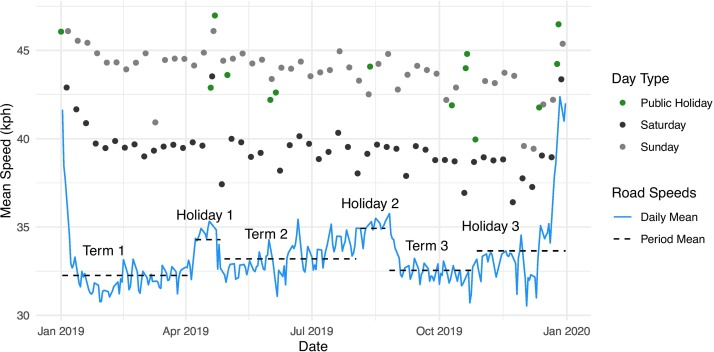Urban congestion is a familiar challenge, particularly in bustling cities like Nairobi. While expanding roads has been a traditional response, this often overlooks critical elements like public transport and equitable access. Our new paper delves into how school travel can uniquely influence traffic patterns and exacerbate congestion challenges.
We used 2019 Uber Movement data to study traffic conditions during school terms versus holiday periods. There was a notable drop in road speeds during school sessions, with secondary roads experiencing the brunt of congestion. Importantly, our spatial analysis showed distinct patterns in travel time changes, often correlating with socioeconomic disparities. By integrating data from openrouteservice, we modeled realistic travel scenarios, showing that affluent areas faced heightened traffic as families drove to quality schools located farther from their homes. This disconnect underscores the pressing need for integrated planning that prioritizes school access, non-motorized transport, and robust public systems to alleviate traffic woes and promote equitable urban growth.

Check out the full insights for sustainable urban development in our publication: https://www.sciencedirect.com/science/article/pii/S2950196225000225

0 responses so far ↓
There are no comments yet...Kick things off by filling out the form below.